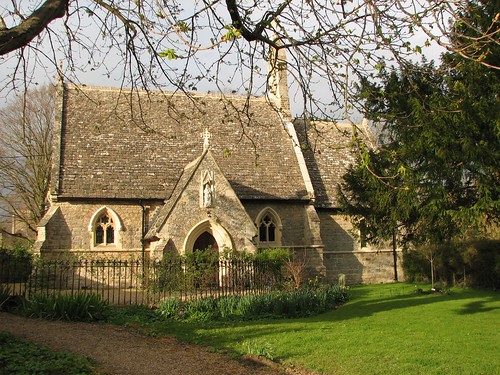C
Caesar
Guest
I thought that this might be an interesting (and more positive) topic for this forum. I always try to keep up with the posts at The New Liturgical Movement blog, which is always a great source of information on traditions and Liturgical Rites, which is where I found this pictures.
They are from a Catholic church in England which primarily uses the Novus Ordo (although quite reverant with many traditional elements) and sometimes the Classical Roman Rite. This church also uses on occaision the Sarum Rite, which was a medieval Liturgical Rite in England that fell out of use during the English Reformation (although variations of this Rite were taken up by the Anglicans, especialy in the Anglo-Catholic/Oxford movment in the 1800s). However, this church uses many elements taken from the Sarum Rite in its architecture and interior design, and also in its normal Liturgical practices.

The exterior of St. Birinus Church
l.yimg.com/www.flickr.com/images/spaceball.gif
A statue of St. Birinus over the door.
l.yimg.com/www.flickr.com/images/spaceball.gif
A picture of the beautiful High Altar. Notice the Riddel Posts and curtains on either side of the Altar- an ordinary fixture in Sarum Rite churches.

The Rood Screen, which is another element taken from the Sarum Rite, although screens separating the choir in some form or another were common in churches throughout Europe until the Renaissance (recall the transenna in the Sistine Chapel). The Choir Screen is a descendant of the Inconostasis, which still survives in the Eastern Churches.
http://l.yimg.com/www.flickr.com/images/spaceball.gif
The sedia used by the priest. As was common in pre-Vatican II churches, the arms of the current priest are emblazoned on the back of the seat.



In keeping with the Lenten traditions of the Sarum Rite, St. Birinus church viels all crosses Crucifixes, icons and religious images are covered for the entirety of Lent. Instead of the Roman Rite practice of using Purple as the Liturgical colour for Lent, the Sarum tradition is to use unbleached or light-colored cloth , in order to express the solemnity of this time. The viels and the Altar frontal are simply adorned with black and red Lenten symbols.
More pictures can be found here.
They are from a Catholic church in England which primarily uses the Novus Ordo (although quite reverant with many traditional elements) and sometimes the Classical Roman Rite. This church also uses on occaision the Sarum Rite, which was a medieval Liturgical Rite in England that fell out of use during the English Reformation (although variations of this Rite were taken up by the Anglicans, especialy in the Anglo-Catholic/Oxford movment in the 1800s). However, this church uses many elements taken from the Sarum Rite in its architecture and interior design, and also in its normal Liturgical practices.

The exterior of St. Birinus Church
l.yimg.com/www.flickr.com/images/spaceball.gif
A statue of St. Birinus over the door.
l.yimg.com/www.flickr.com/images/spaceball.gif
A picture of the beautiful High Altar. Notice the Riddel Posts and curtains on either side of the Altar- an ordinary fixture in Sarum Rite churches.

The Rood Screen, which is another element taken from the Sarum Rite, although screens separating the choir in some form or another were common in churches throughout Europe until the Renaissance (recall the transenna in the Sistine Chapel). The Choir Screen is a descendant of the Inconostasis, which still survives in the Eastern Churches.
http://l.yimg.com/www.flickr.com/images/spaceball.gif
The sedia used by the priest. As was common in pre-Vatican II churches, the arms of the current priest are emblazoned on the back of the seat.



In keeping with the Lenten traditions of the Sarum Rite, St. Birinus church viels all crosses Crucifixes, icons and religious images are covered for the entirety of Lent. Instead of the Roman Rite practice of using Purple as the Liturgical colour for Lent, the Sarum tradition is to use unbleached or light-colored cloth , in order to express the solemnity of this time. The viels and the Altar frontal are simply adorned with black and red Lenten symbols.
More pictures can be found here.
